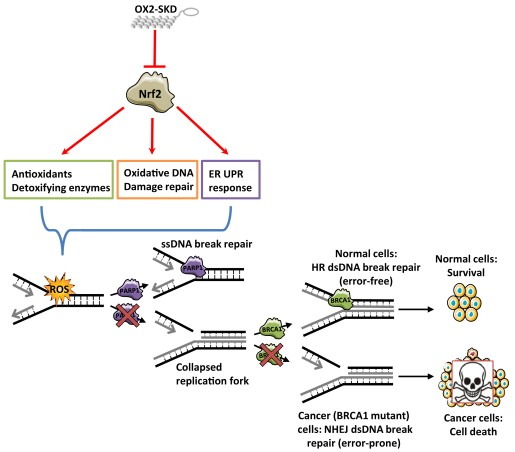Figure 7.

Hypothesis enhanced cytotoxic effect of combination therapy (PARP inhibitors and NRF2 inhibition) in BRCA1 mutant cancers. ATF‐mediated (OX2‐SKD) repression of NRF2 results in downregulation of downstream target genes involved in the protection against ROS. This results in enhanced sensitivity toward ROS‐induced DNA and protein damage. BER (base excision repair) is mainly involved in the repair of ROS‐induced DNA damage. When PARP inhibitors inhibit this DNA repair pathway, the ROS‐induced ssDNA breaks will turn into dsDNA breaks upon cell division. In normal, non‐BRCA1 defective cells, dsDNA breaks will be repaired by the error‐free HR (homologous recombination) DNA repair pathway. In contrast, in malignant, BRCA1 defective cells, dsDNA breaks cannot be repaired by HR, and therefore, the more error‐prone NHEJ (non‐homologous end joining) DNA repair pathway will take over. The end‐result is genomic instability and this will induce cell death.
